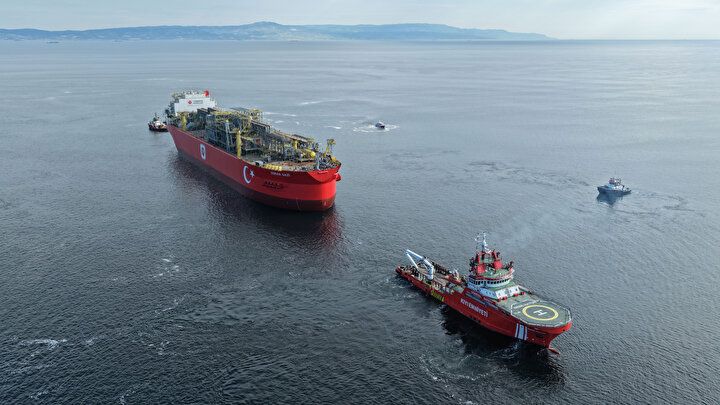First floating gas platform Osman Gazi set to cross Bosphorus

By News Centre
Türkiye is set to mark the anniversary of the conquest of Istanbul with a major energy milestone: the nation’s first floating natural gas production platform, Osman Gazi, will pass through the Bosphorus tomorrow on its way to Filyos Port.
With its arrival in the Sakarya Gas Field scheduled for mid-2026, the Osman Gazi platform will significantly boost Türkiye’s offshore natural gas production. The platform is expected to double the current daily output in the Black Sea from 9.5 million to 20 million cubic meters, enough to meet the natural gas needs of approximately 8 million households.
Spanning nearly 300 meters in length and capable of processing
10.5 million cubic meters of natural gas per day, Osman Gazi will
become a vital asset in Türkiye’s offshore energy infrastructure.
It will operate in the Sakarya Gas Field for 20 years, transferring
processed gas to land through a 161-kilometer pipeline, where it
will be fed into the national grid.
The platform, which underwent extensive renovation at a shipyard in
Çanakkale from September 2024 to May 2025, departed from dry dock
on May 27. It will make its 11-hour passage through the Bosphorus
on May 29, accompanied by a send-off ceremony at Dolmabahçe Palace
led by President Recep Tayyip Erdoğan and Energy Minister Alparslan
Bayraktar. The platform is expected to dock at Filyos Port on June
1.
With the launch of Osman Gazi, Türkiye is elevating its position
as a regional energy player. The country now possesses one of the
world’s largest hydrocarbon fleets, consisting of four deep-sea
drilling vessels and two seismic research ships. This includes the
high-tech Fatih, Yavuz, Kanuni, and Abdülhamid Han drilling ships,
as well as the seismic vessels Barbaros Hayreddin Paşa and MTA Oruç
Reis.
Each vessel contributes uniquely to Türkiye’s deep-sea exploration
capabilities. The Fatih, for example, made the largest natural gas
discovery in the country’s history in the Black Sea in 2020. The
Yavuz, Kanuni, and Abdülhamid Han ships further enhance Türkiye’s
ability to conduct ultra-deepwater drilling in challenging
environments.
Türkiye’s seismic exploration efforts are led by the Barbaros
Hayreddin Paşa and MTA Oruç Reis ships. These vessels can analyze
geological formations up to 15 kilometers below the seabed and are
equipped with advanced systems to collect two- and
three-dimensional seismic data. They are critical to identifying
promising offshore reserves and planning future drilling
operations.
With the addition of Osman Gazi, Türkiye transitions from merely
exploring and drilling offshore to producing natural gas at sea — a
major step toward energy independence.
Here we are to serve you with news right now. It does not cost much, but worth your attention.
Choose to support open, independent, quality journalism and subscribe on a monthly basis.
By subscribing to our online newspaper, you can have full digital access to all news, analysis, and much more.
You can also follow AzerNEWS on Twitter @AzerNewsAz or Facebook @AzerNewsNewspaper
Thank you!
